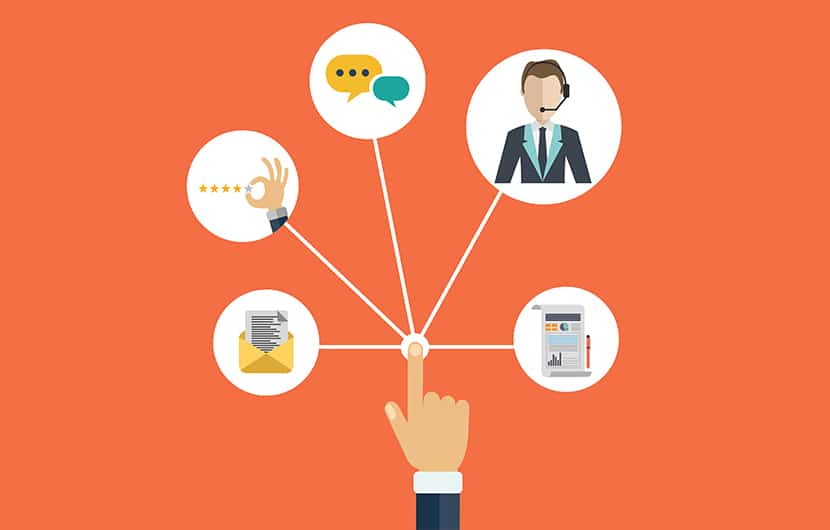Business
The advantages of omni-channel customer engagement platforms and tips for effective sales and brand building
First things first. Today, how successful a retailer would be is not just pivoted on how seamless the customer experience that the retailer provides is. It also depends on how well the retailer monitors or keeps track of their customers. Consumers today want to buy products and services at their terms, at their convenience and in their method. They have more power and options than ever before and they expect the best experience, wherever they are – be it online or offline.
Many online- exclusive brands of today have realized the fact that in order to improve customer conversation rates, having physical stores are imperative – at least for high-involvement categories such as furniture, fashion and accessories. As a corollary, brands started making the best use of offline and online worlds. Erstwhile, the markets were primarily product-centric. Today, they have evolved into being customer-centric. The shift was in tandem with changing customer demands and behavior. Today the degree of loyalty that a brand has towards its consumers seems to be much higher than the other way around.
Having a physical store is undoubtedly an expensive asset. Retailers now have to steer their attention back onto the store if they want to leverage the most out of this asset. This can be done by bringing stores on to the distribution network- thereby guaranteeing flexibility. By making the stores mini-distribution centers, retailers can deliver true Omni-channel shopping experience to their customers. Some brands are successfully following this model.
The retailers can in fact use inventory present at their stores to ship to customers their orders. The store also doubles up as a place to click-and collect orders. Customers can click, collect and return goods as per their terms and at their convenience, completely hassle-free. Moreover, the logistics costs are also reduced. Today’s customers are discerning – they are not just seeking quality products, but a combination of value, convenience and a unique experience.
Unified platform
Hassle free and seamless customer experience across channels is not attainable unless one has a unified platform at their disposal. Several retailers and merchants know this truth, however, they lack the technology streak to make it happen.
Disparate systems and processes working in silos and singularity will no longer be preferred in the present times of advanced handheld devices and stupendous network infrastructures. Unified systems will eliminate the need for multiple system integrations. Some requirements for this are:
Single identity across channels
Unified order management
Single inventory visibility across stores, warehouses
Unified promotions, communication strategies and channels
Unified analytics and insights
A typical omni-channel strategy upholds the doctrine of O2O (online to offline and vice versa). However, this is not applicable for big brands. Small businesses, retailers, SMEs and small ecommerce companies can take advantage of such technologies via cost effective third-party solutions which also promise incremental ROIs.
The Omni-channel promise
The aggregate value of Omni channel in India is pegged at around $24 Billion (4% of the overall retail market- $600 Billion). This is not just pure transaction value but also the digitally influenced revenue (people searching, browsing products etc). The overall percentage is projected to double over the next three years.
Furthermore, the market opportunity is huge given the 450 Million+ digital consumers active in India and about 2 Billion+ in Asia.
Macys, Walmart and other companies in the west who have gone omni-channel are reaping the returns of more than 15% of the revenues through Omni channel.
Asian companies have also benefitted hugely from omni-channel and this influences around 10% of their revenues. Apart from the revenues, the benefits also include “anytime, anywhere, any channel” shopping experience for customers. Omnichannel is no more just a terminology. It is very much a reality that brands are accepting and embracing.
Tips for effective customer engagement and how it can be converted to sales or brand building
CRM and Consumer engagement solutions: Success of a CRM strategy will depend on the ability of analytics data warehouse to provide automated actionable insights and will have the above expectation of unified data. CRM intelligence such as segmentation/micro segmentation will be further refined on the unified data to better understand customer behavior and customer triggers that drive them to make a purchase. As the customer migrates to a different channel, CRM will understand and adjust accordingly. The customer engagement solutions will understand customer likes/dislikes at a deeper level and suggest marketing manager’s necessary adjustments.
It is true that different retailers will have different success rates on different channels. The channel communication cost and ROI will be credible feedback to properly assess the trade off between incremental sales and channel communication cost in addition to the cost of transaction. Moreover, CRM solutions will also move towards personalizing channels efficiently manage customer experience across channels. The channel engagement strategy will be personalized heavily based on customer’s past purchases and behavior.
Enhancement in In-store shopping experience: The new technologies like Artificial Intelligence, Computer Vision and Deep Learning will drive a radical shift in the way we interpret and capture data from offline world, which until today was a big void for the offline retail managers to fill. There are many ways in which the offline or in-store experience can be seen evolving in the near future.
Also, the store traffic data at an overall level will assist brands plan the store resources at the stores by predicting when and which stores will expect how many visitors – thereby providing better customer experience. This will also enable retailers to change the sales pitch and maximize the merchandise and aisle placement by understanding the conversion rates across demographic segments and traffic hotspots within the store. At an individual level, the technology will help correctly identify a customer in the store’s vicinity, thereby providing the store staff to create a customized and targeted guidance/instruction for every customer.
Big data for consumers: In the omni-channel retail ecosystem, unstructured analytics will not work. Technology will gather, organize and analyze all kinds of data, namely, transactional, behavioral, price changes, store staff performance, footfalls, stock management, campaigns and loyalty etc. across channels. Action engineered data analytics will take over.
To make the decision taking time shorter, the industry is fast shifting towards predictive and prescriptive analytics with actionable insights from traditional diagnostic analytics. Like for example, if a store is not performing well, the analytics tool should be able to make the store staff aware and suggest several corrective actions to achieve the target and make it a well-performing asset. .
Software in customer delivery: Catering to the ever growing demands of consumers, in terms of product and service delivery, is another aspect that the retailers are focusing on today. Using technology, these retailers are making efforts to reduce waiting time by providing real time delivery options, choices of time slot, notification by emails and SMSes etc. However, led by evolution, retailers are using software like field service management for before-time workforce scheduling. They are also using route optimization software for swift delivery. Consistently adding value to their services, retailers are introducing new delivery options for various channels such as click and collect, premium same day service, hyperlocal, etc. Taking these services, another notch higher, retailers have now started focusing on one hour delivery service as well.
Through these methods, brands can provide the right communication, through the right channel at the right time to the right consumer, delivering an amazing customer experience. This increase the level of engagement a customer has with the brand, elevating brand perception and in turn conversion.
Why it is an advantage to work with a home-grown platform instead of a foreign one- highlight on the Indian sentiment
Being an Indian home-grown platform has a lot of advantages when compared to large global service providers
Agile & Aggressive
When a brand licenses a product from a large global software service provider they have to invest a lot of time and money on infrastructure, implementation, maintenance, etc. On the other hand, premier Indian companies can provide agile solutions to clients with record time to market. Not only they can bring down the Total Cost of Ownership, but also provide great value for money to the clients.
GloCal Approach
Many Indian companies have GloCal approach in their marketing strategies. They are globally scalable but locally relevant. Many have a Global outlook but use Local insights to deliver the best of both worlds to their clients. Their deep focus and understanding of local markets and the industry helps them to develop solutions that are suitable for the region’s market dynamics.
Outcome Focus
Companies like Capillary Technologies are committed to deliver positive outcomes for its clients through its solutions. Their unique results focused approach drives roughly 5-7% of the overall revenues of their clients. Through their engagement suite (Marketing Cloud) they promise to deliver a minimum of 3X ROI.
Platform→ Expertise→ Delivery
Furthermore, when subscribing for a service, brands have to buy the license, work with a large SI (Service Integrator) to implement the service, and maybe hire an agency for digital marketing. However,few companies like Capillary doesn’t just provide a platform that enables brands to provide wonderful experiences to their customers, but also goes the extra mile in optimising the platform for that particular business. Capillary helps the client with their expertise in the industry by offering business consultations as well as service execution support. Capillary acts as a single go to partner for all its solutions in order to ensure customer success.
Disclaimer: The views and opinions expressed in this article are those of the authors and do not necessarily reflect the official policy or position of the publication




















Pingback: The CX Roundup - Edition 29 | Servion